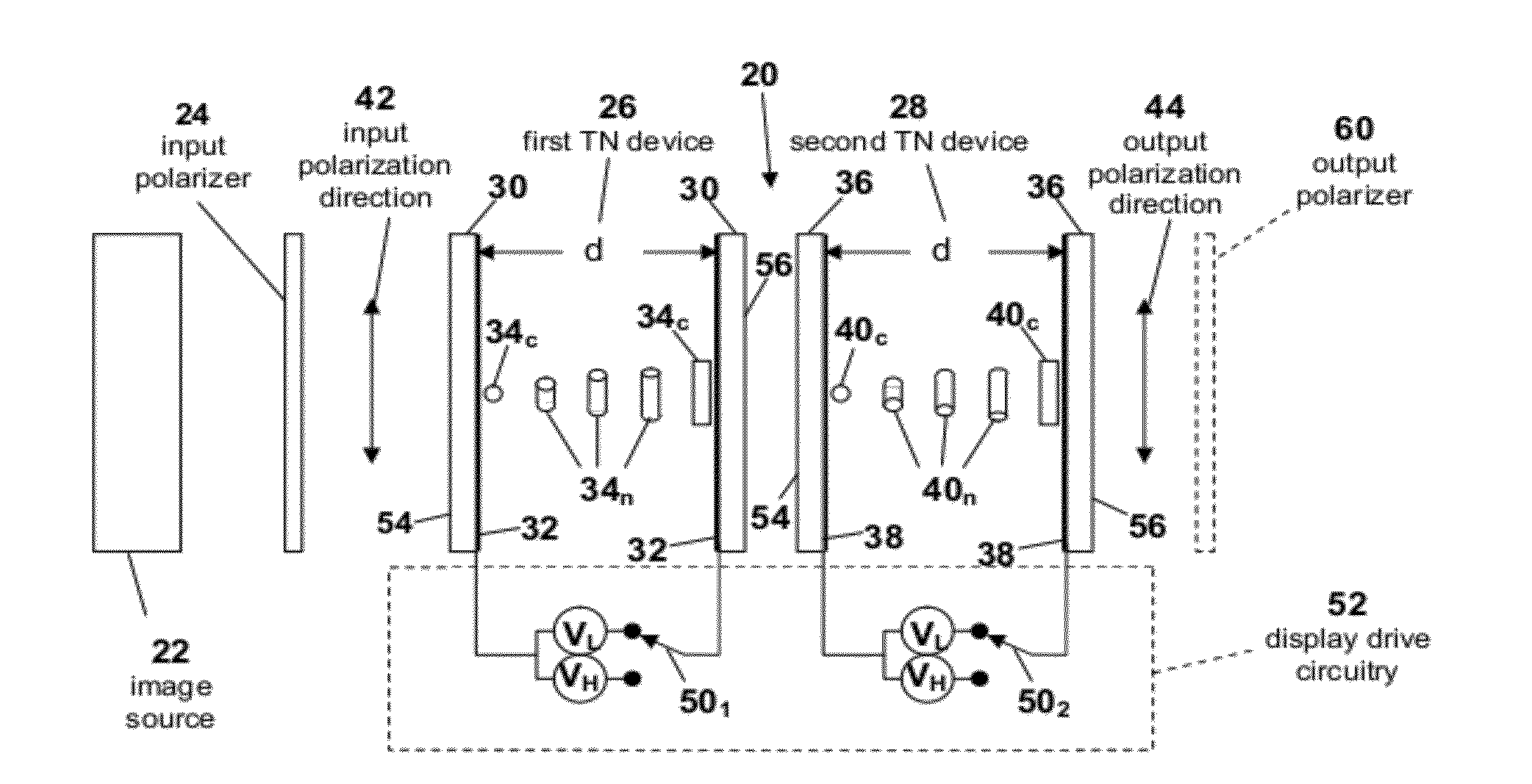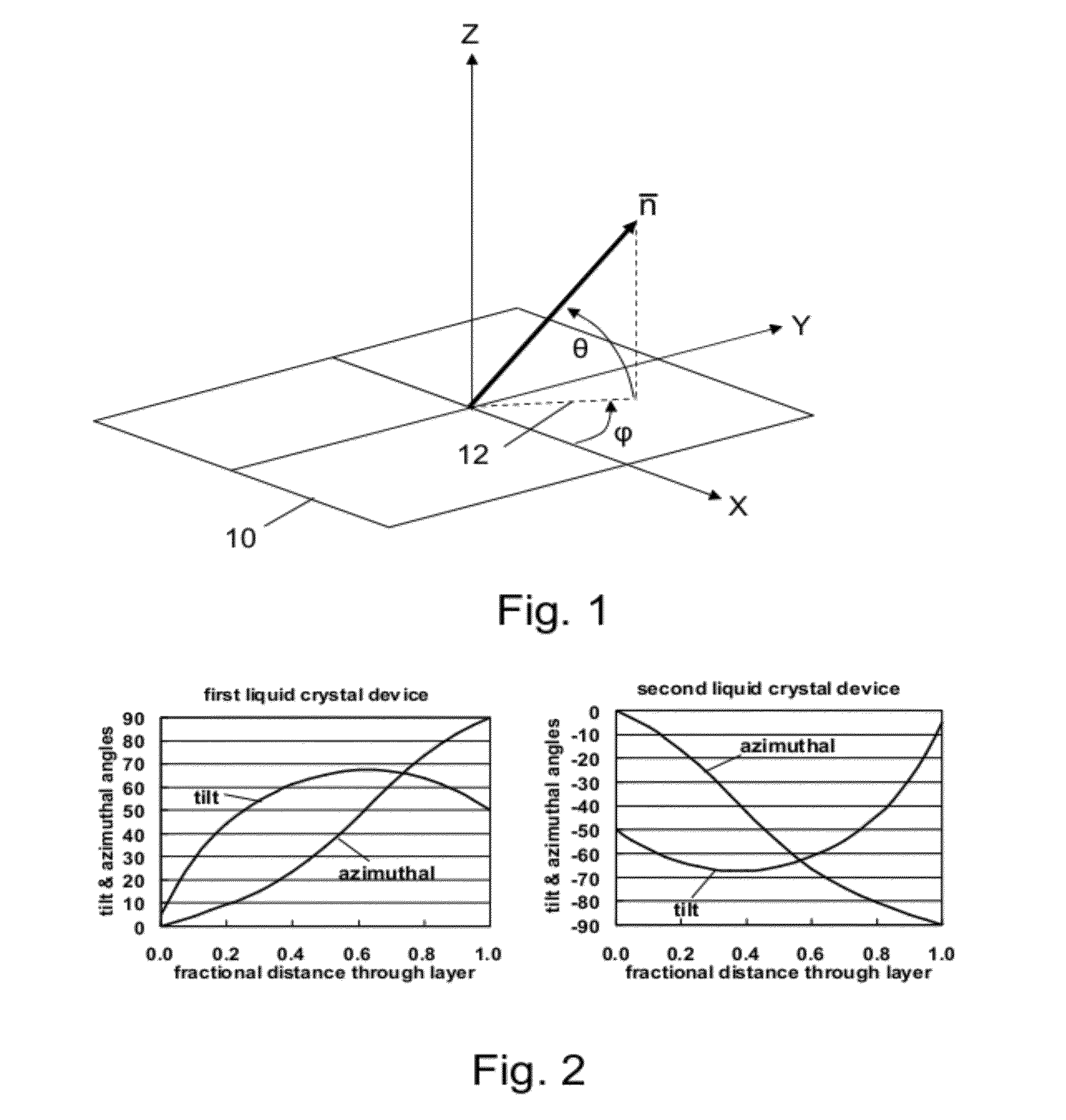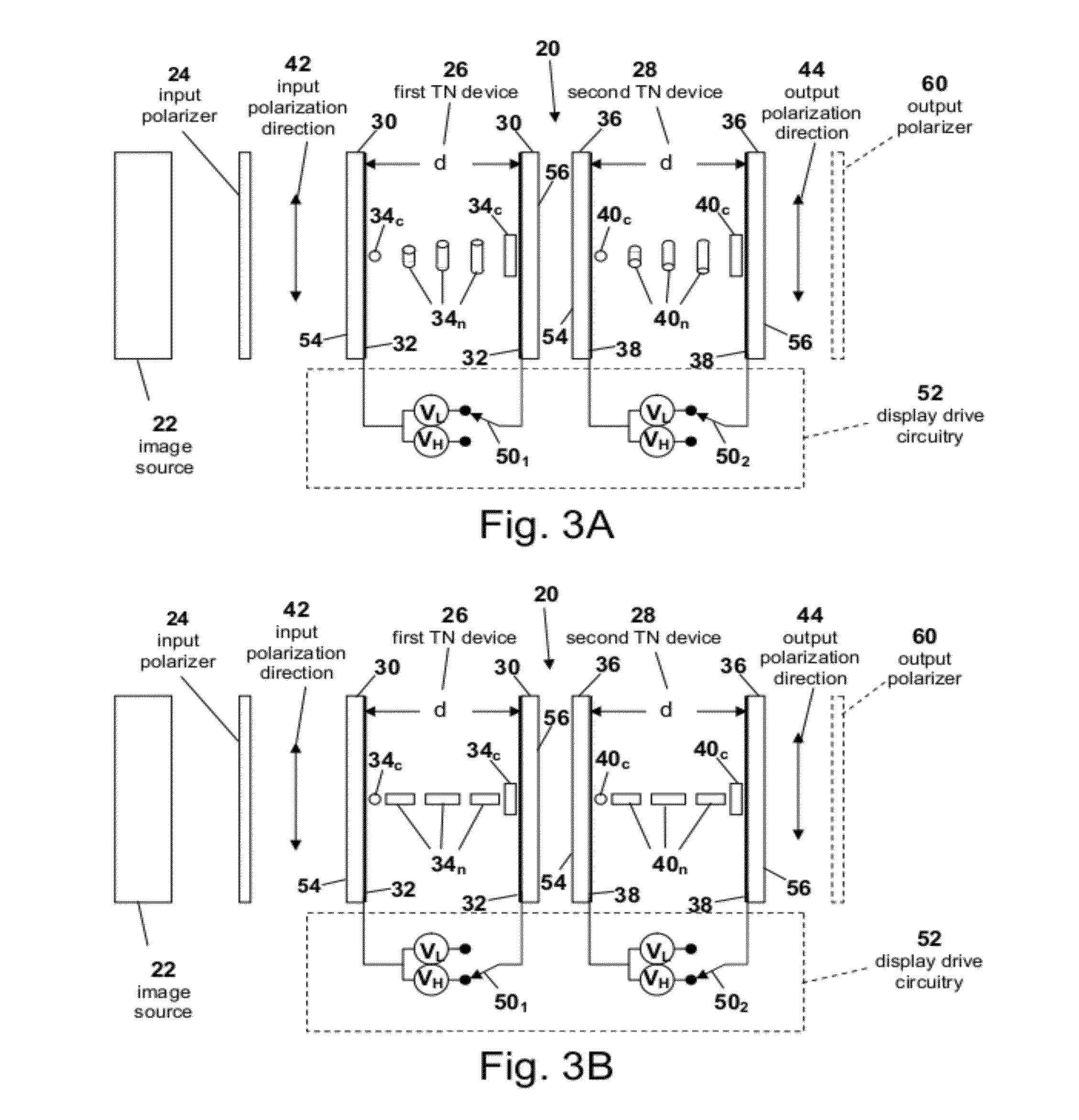High-speed liquid crystal polarization modulator
a liquid crystal polarization modulator, high-speed technology, applied in the direction of optics, instruments, electrical equipment, etc., can solve the problems of two frequency technology, inability to switch uniformly over a large area, and inability to achieve high-speed, low-voltage optical state transition
- Summary
- Abstract
- Description
- Claims
- Application Information
AI Technical Summary
Benefits of technology
Problems solved by technology
Method used
Image
Examples
second embodiment
[0077]FIG. 7 shows for a second preferred embodiment the drive signal conditions for TN polarization modulator 20, in which analyzing or output polarizer 60 is combined with polarization modulator 20 to enable it to act as a light shutter in active glasses for stereoscopic 3D viewing in conjunction with image source 22 showing left eye and right eye image subframes. The left and right eyepiece lens assemblies in the active glasses have the same structures, each comprising first TN device 26 and second TN device 28, as shown in FIG. 3A, placed between input polarizer 24 and output polarizer 60. The light transmission polarization axes of input polarizer 24 and output polarizer 60 are set at a right angle to each other. The drive signal waveforms for first and second TN devices 26 and 28 of the right eyepiece lens are shown in FIG. 7, lines (a) and (b) and for the left eyepiece lens in FIG. 7, lines (c) and (d). The drive signal waveforms for the left eye are the same as those for the...
fourth embodiment
[0087]The fourth embodiment using two ECB devices 84 and 86 constructed with a nematic liquid crystal mixture having positive dielectric anisotropy has been realized experimentally. Each of the ECB devices was made using indium tin oxide (ITO) coated glass substrates, and liquid crystal director alignment was provided with rubbed polyimide such that, when the two substrates were assembled, the rub directions on the top and bottom substrates were anti-parallel to each other. The pretilt angle of the surface-contacting directors was about 4°, and a cell gap, d, of 2.5 μm was provided using spacers in the seal material. The ECB liquid crystal devices were filled with the nematic liquid crystal mixture MLC-7030 available from Merck KGaA, Darmstadt, Germany. The MLC-7030 mixture has a birefringence of 0.1102.
[0088]FIGS. 10A and 10B show the drive signal waveforms applied to first and second ECB devices 84 and 86. In this case, the subframe period was 5.0 ms, corresponding to a frequenc...
PUM
| Property | Measurement | Unit |
|---|---|---|
| response time | aaaaa | aaaaa |
| voltages | aaaaa | aaaaa |
| angle | aaaaa | aaaaa |
Abstract
Description
Claims
Application Information
 Login to View More
Login to View More - R&D
- Intellectual Property
- Life Sciences
- Materials
- Tech Scout
- Unparalleled Data Quality
- Higher Quality Content
- 60% Fewer Hallucinations
Browse by: Latest US Patents, China's latest patents, Technical Efficacy Thesaurus, Application Domain, Technology Topic, Popular Technical Reports.
© 2025 PatSnap. All rights reserved.Legal|Privacy policy|Modern Slavery Act Transparency Statement|Sitemap|About US| Contact US: help@patsnap.com



